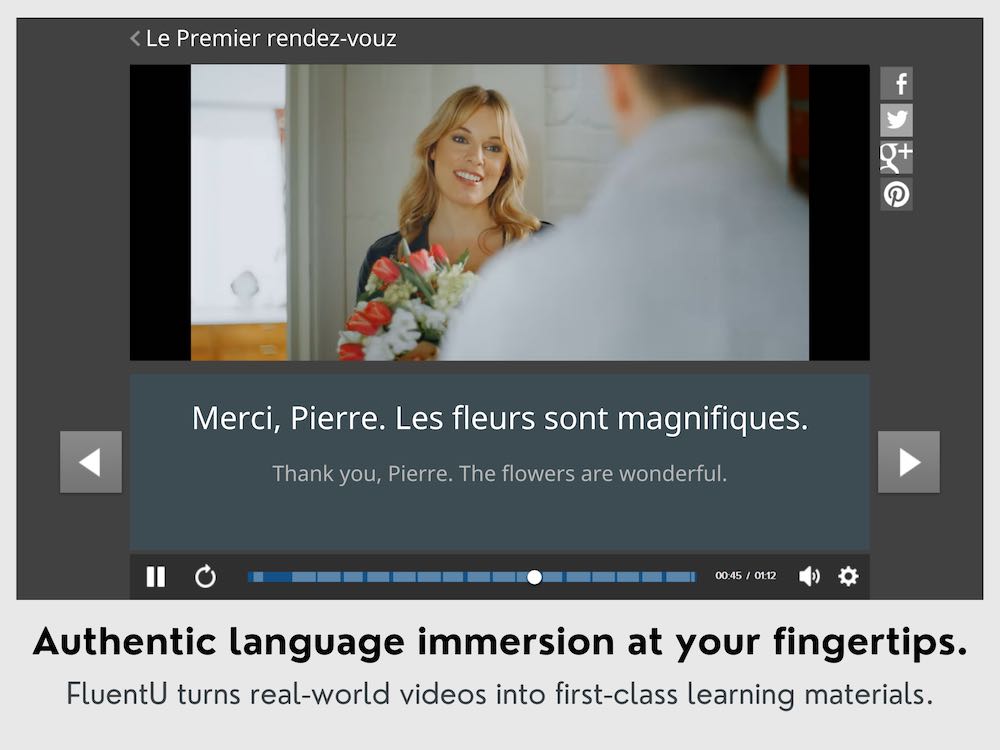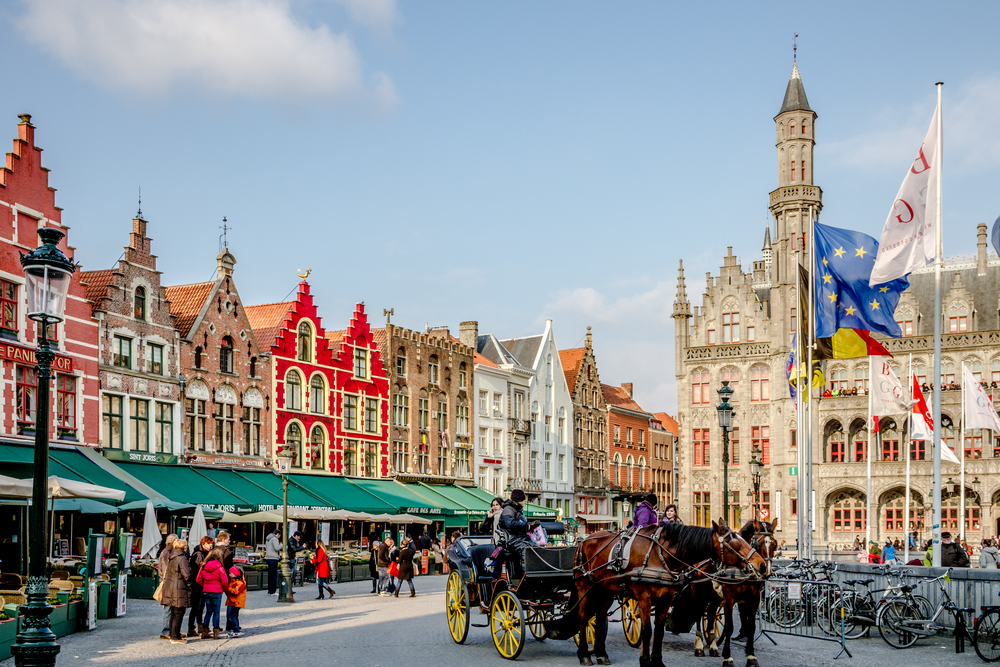
Belgian French: 10 Things You Need to Know
If you’ve been learning French, it’s likely that you’ve been learning Parisian French.
But France isn’t the only place where French is spoken. There’s Québec, Switzerland, Haiti and parts of Western Africa. And one of my personal favorites… Belgium.
In this post, I’ll cover 10 things you must know about Belgian French, from awesome Belgian music and movies to the differences in French vocabulary used in Belgium.
Contents
- The Basics of Belgian French
- 10 Fun Facts That Will Help You Master Belgian French
- 1. Mealtimes may be delicious, but they have different names.
- 2. The numbers are far more logical.
- 3. You might stumble over savoir and pouvoir.
- 4. Belgian tunes will keep you jamming.
- 5. There are more great Belgian movies than you probably thought.
- 6. Belgium is comic book heaven.
- 7. You should be careful when asking for une serviette (a towel).
- 8. There’s a twist on how you describe curly hair.
- 9. Une fois is a popular filler word.
- 10. It’s Belgian fries, not French fries.
- And one more thing...
Download: This blog post is available as a convenient and portable PDF that you can take anywhere. Click here to get a copy. (Download)
The Basics of Belgian French
Who speaks it?
In Belgium, there are three major languages spoken: French, Dutch (aka Flemish) and German. Wallonia, in the south (the bit closest to France), is where French is spoken. In the north (closer to the Netherlands), they speak Dutch. And where Belgium borders with Germany in the east, there are a few areas where German is spoken. Then, you have Brussels. It’s a good mix of French and Dutch there, but knowing either will get you around.
Roughly 40% of Belgians speak French natively, so it’s certainly useful to know the ins and outs of how this population speaks the language.
What’s the accent like?
The Belgian accent is often a subject of ridicule in French comedy (though not to the extent that the québécois accent is, thankfully). For an example, check out this scene in the hilarious film “Le dîner de cons” (“The Dinner Game”).
For a great overview, this YouTuber will explain what l’accent belge (the Belgian accent) is, and make the argument that accents vary by city. He even includes phrases and examples.
Is it that different from the French spoken elsewhere?
Not really. While there are certainly differences in the accent, if your comprehension skills are strong, you won’t have any issues understanding Belgian French. If you’re comparing it to the French spoken in Western Africa or Québec, there are more noticeable differences. Compared to what you likely learned in school or the French that’s usually referenced in podcasts or other common immersion tools, it’s totally manageable.
10 Fun Facts That Will Help You Master Belgian French
1. Mealtimes may be delicious, but they have different names.
In France, your mealtimes are as follows: le petit-déjeuner (breakfast), le déjeuner (lunch) and le dîner (dinner). Whether you’re enjoying une crêpe (crepe) for breakfast in France or une gaufre (waffle) in Belgium, breakfast time is always referred to as le petit-déjeuner .
At lunchtime, beware! If you’re in Belgium and tell a friend you want to meet them for le dîner (dinner), there might be a touch of confusion. In Belgium, the word for lunch is le dîner , not le déjeuner.
But don’t worry, the Belgians aren’t skipping straight to dinner. Their word for dinner is le souper . Just think of a delicious soup late on a cold winter night, or of the English word “supper.”
2. The numbers are far more logical.
This is perhaps the best news you’ll hear all day. For non-native French speakers, numbers can be tricky. After sixty, you’ve got soixante-dix (seventy, or sixty plus ten), quatre-vingts (eighty, or four times twenty) and quatre-vingt-dix (ninety, or four times twenty plus ten).
Oh là là !
Well, in Belgium, there’s far less multiplication and addition. After sixty, things stay simple:
Septante replaces soixante-dix (seventy).
Octante replaces quatre-vingts (eighty).
Nonante replaces quatre-vingt-dix (ninety).
Ahhh, much better. Reason enough to spend a summer abroad in Liège instead of Paris.
3. You might stumble over savoir and pouvoir.
You should “know” that savoir (to know) and pouvoir (to be able to) “can be” different.
Ha. Get it? Nope? Then keep reading.
Often, instead of using pouvoir (to be able to) to express that they can or cannot do something, Belgians will use savoir (to know).
Here’s an example of the same scenario in both France and Belgium:
In Belgium: Je ne sais pas faire un gâteau ce soir. (I cannot make a cake tonight.)
In France: Je ne peux pas faire un gâteau ce soir. (I cannot make a cake tonight.)
The first example reads as though the person doesn’t know how to make a cake. It can get a little confusing if you’re not aware of this difference, but now that you know to watch out for it, you can tell the meaning by listening to the context. Hopefully.
Don’t worry too much about using savoir in place of pouvoir yourself. Pouvoir is still understood in Belgium to mean “to be able to.”
Oh, and here’s a bonus joke:
Plumber: Je ne saurai vous réparer ce robinet ce soir. (I don’t know how to/cannot repair this faucet tonight.)
Client: Comment ça ? Vous êtes plombier et ne savez pas réparer les robinets ? (How is that? You are a plumber and don’t know how to repair faucets?)
Plumber: Je ne saurai que demain matin. (I will know how to do it tomorrow morning/I will be able to do it tomorrow morning.)
Client: Vous aurez appris pendant la nuit ? (You will learn how during the night?)
Plumber: Non, mais j’aurai pu me procurer la pièce ! (No, but I can get the part!)
4. Belgian tunes will keep you jamming.
French music is a great way to squeeze language learning into your day effortlessly. Watch music videos in your down time, make a playlist for your car, or have a dance party (if that’s what you’re into). Belgian tunes are no exception here. Old or new, jazz or electronic, Belgium has a vibrant music scene.
Master of la chanson ? Yes, he was. Jacques Brel’s songs will serenade you into pure musical bliss. With his easy-to-understand lyrics accompanied by beautiful instrumentals, you’ll be humming his tunes all day. In fact, here’s two hours’ worth of his greatest hits to get you started.
Want more modern flair? Then Belgian artist Stromae may be your new favorite. “Alors on danse” is one of his biggest hits. Incidentally, the music video is pretty great. Lyrics in both English and French can be found here. Also worth checking out are the music videos for “Ta fête” and “Tous Les Mêmes.”
You can also find some of Stromae’s music videos, like the one for his song “Papaoutai,” among the authentic French videos available on FluentU. On this language learning program, you’ll be able to watch an array of French clips, all of which feature interactive subtitles that you can use to find the meaning of a word or more examples of a specific term in use. The videos are also accompanied by quizzes, transcripts and a list of key vocabulary so you can review the language used in the video.
5. There are more great Belgian movies than you probably thought.
If you’re into the foreign movie scene at all these days, then you may be familiar with the work of the Dardenne brothers. “Le gamin au vélo” (“The Kid with a Bike”) came out in 2011 and received international acclaim. It tells the story of a foster child looking for his father. He finds an unlikely friend in a local woman. It’s heartfelt, emotional and it was filmed in Belgium.
Also, check out their movie “Deux jours, une nuit” (“Two Days, One Night”), another low-concept movie made in Belgium with Marion Cotillard. For weeks of French movie nights, dig into the Dardenne brothers’ full filmography.
Maybe you’re in an edgier mood. You enjoy a little dark comedy. Well, I encourage you to check out the movie “C’est arrivé près de chez vous” (“It Happened in Your Neighborhood”)—by the English title, “Man Bites Dog.” It’s a mockumentary about a serial killer. Don’t worry, it’s just his day job.
6. Belgium is comic book heaven.
Even though it’s number six on the list, this is perhaps the number one reason to embrace Belgian French. Belgium, along with the United States, Japan and France is one of the biggest players in the comic book industry. Called une bande dessinée (comic book) or une BD for short, the famous “Tintin” can claim Belgium as its birthplace. Brussels even has a BD museum and murals of Tintin around town. A perfect excuse to visit the city and exercise your French!
Belgian greats include “Les Schtroumpfs” (“The Smurfs”), “Asterix,” “Gaston LaGaffe” and “Lucky Luke.” Comics are a great way to learn French, as they combine visual cues with the written word. Check out this post and this post for more tips and BDs to check out. The “Tintin” comics are also available on this iOS app.
Comic books not your thing? Rather read a real book? Well, the works of Belgian author Georges Simenon are extensive. His Commissaire Maigret series will keep you up to your knees in detective novels for some time. There are 75 (septante-cinq) of them. Septante-cinq !
7. You should be careful when asking for une serviette (a towel).
Keep asking for a towel and getting a napkin!? This can be a major problem if you’re sopping wet and need to dry off.
Luckily this is an easy fix: In Belgium, une serviette refers to a napkin only (not a towel). Meanwhile, un essuie is the Belgian word for a towel.
8. There’s a twist on how you describe curly hair.
Okay, this might seem a little nit-picky (but luckily little things are the only thing to worry about with Belgian French!). In France, you’d refer to curls (as in hair) as des boucles . But in Belgium, they’re referred to as des crolles . This is very important if you plan on being a Belgian hairdresser.
9. Une fois is a popular filler word.
Ah, the filler words. We have them in English: “like,” “just,” “uhm.” And in Paris: euh , hein , quoi , bref , bon ben (I could keep going). Use them when your brain won’t work fast enough for your mouth!
Une fois means “once” in French, but that doesn’t stop Belgians from using it mid-sentence. Though the translation is hard to pinpoint, it originates from a similar Dutch filler word. Essentially, it’s used to soften the meaning of a sentence.
Check out this post for a comprehensive look at French filler words:
20 French Filler Words [with Audio] | FluentU French Blog
French filler words can keep your sentences flowing the way a native speaker would. These 20 common filler words will allow you to take natural pauses in your speech…
10. It’s Belgian fries, not French fries.
If you take one thing away from this post, let it be an understanding of “French fries.” The origin of the fry ( les frites ) is Belgian. Or is it? Ask either country, and they’ll lay claim to the fame. But visit Belgium, and it’s clear: les frites , served at les friteries , are a way of life in Belgium. They have sauces! Les friteries at every corner! They crack raw eggs on their fries! In France, not so much.
FluentU takes authentic videos—like music videos, movie trailers, news and inspiring talks—and turns them into personalized language learning lessons.
You can try FluentU for free for 2 weeks. Check out the website or download the iOS app or Android app.
P.S. Click here to take advantage of our current sale! (Expires at the end of this month.)
That’s basically all you need to know about Belgian French to survive.
Those who speak French in Belgium, and especially in Brussels, are pretty familiar with other accents and some of those little vocabulary snags, so don’t stress out too much. Just enjoy what Belgian French has to offer. Use it as a gateway to great books, films and music.
Now, if you’re up for more of a challenge, try tackling québécois!
Download: This blog post is available as a convenient and portable PDF that you can take anywhere. Click here to get a copy. (Download)
And one more thing...
If you like learning French on your own time and from the comfort of your smart device, then I'd be remiss to not tell you about FluentU.
FluentU has a wide variety of great content, like interviews, documentary excerpts and web series, as you can see here:
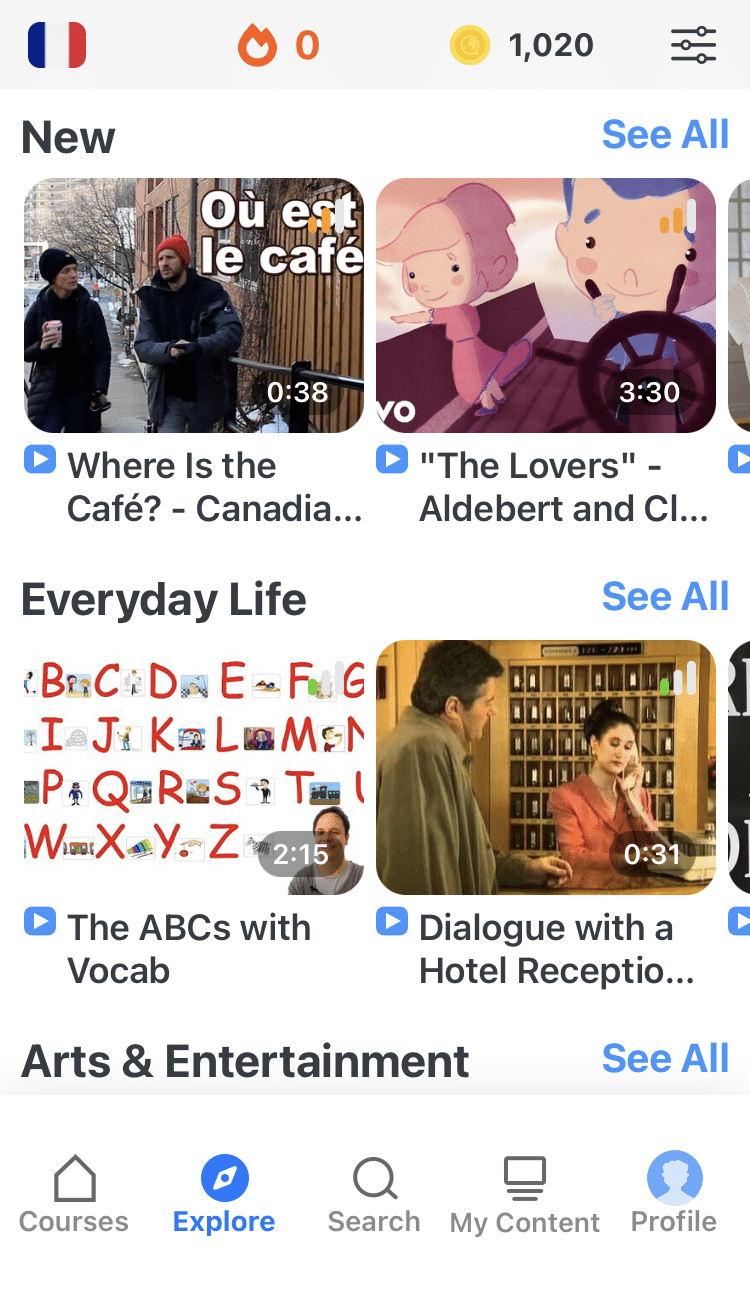
FluentU brings native French videos with reach. With interactive captions, you can tap on any word to see an image, definition and useful examples.
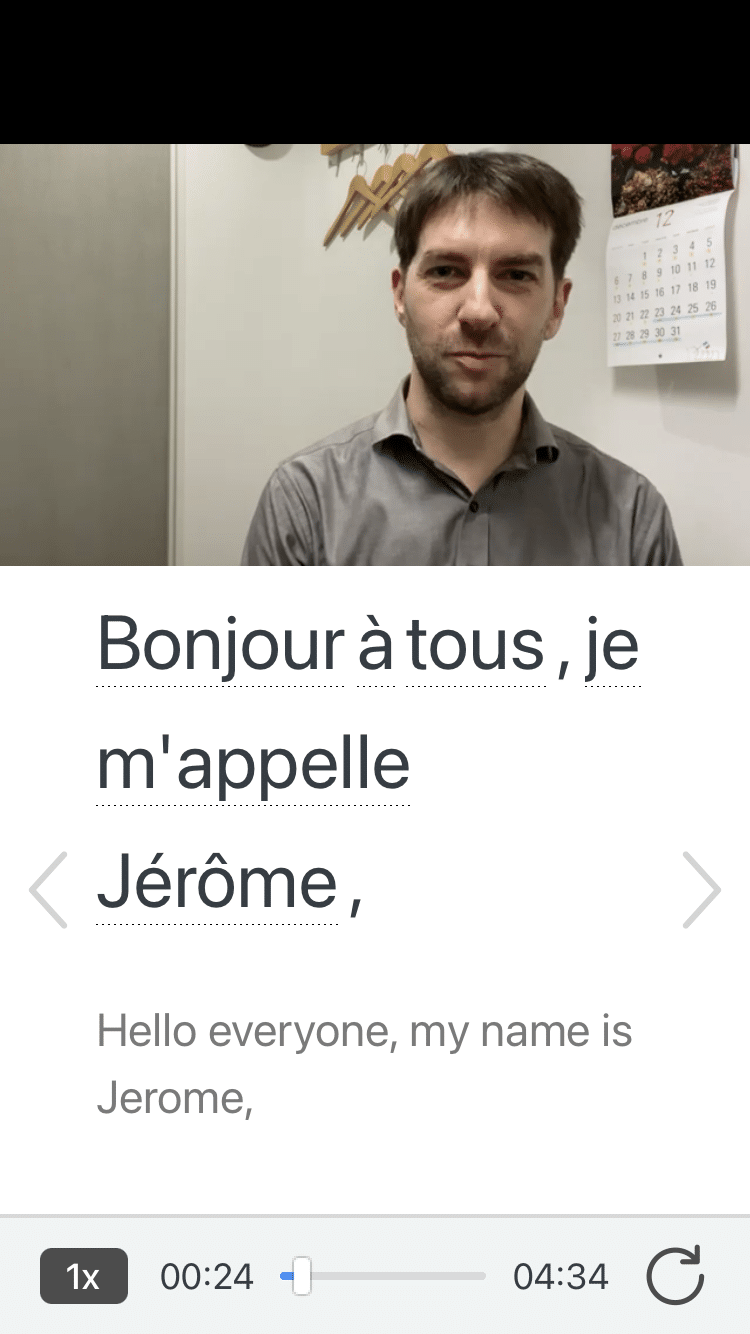
For example, if you tap on the word "crois," you'll see this:
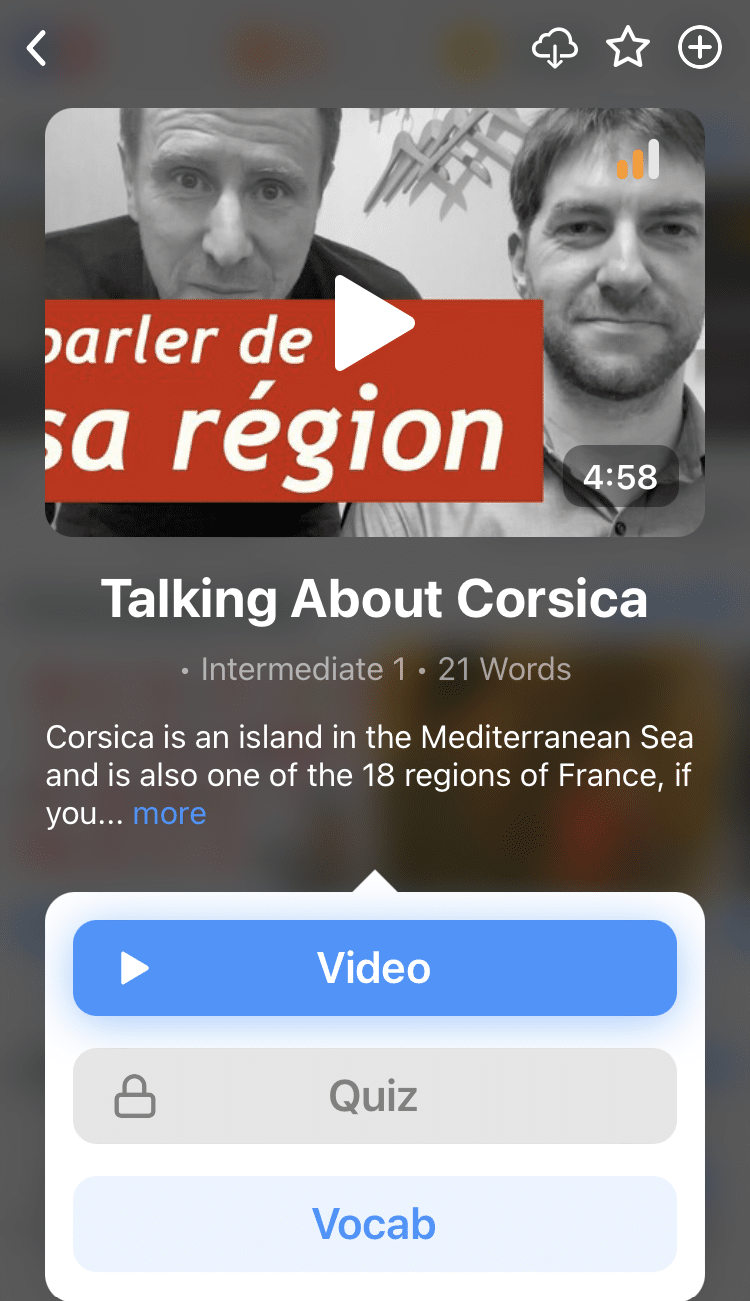
Practice and reinforce all the vocabulary you've learned in a given video with learn mode. Swipe left or right to see more examples for the word you’re learning, and play the mini-games found in our dynamic flashcards, like "fill in the blank."

All throughout, FluentU tracks the vocabulary that you’re learning and uses this information to give you a totally personalized experience. It gives you extra practice with difficult words—and reminds you when it’s time to review what you’ve learned.
Start using the FluentU website on your computer or tablet or, better yet, download the FluentU app from the iTunes or Google Play store. Click here to take advantage of our current sale! (Expires at the end of this month.)
